- Home
- William Gibson
Disneyland with the Death Penalty
Disneyland with the Death Penalty Read online
Disneyland with the Death Penalty
William Gibson
"Disneyland with the Death Penalty" is an article about Singapore written by William Gibson. His first major piece of non-fiction, it was first published as the cover storyfor Wired magazine's September/October 1993 issue (1.4).
The article follows Gibson's observations of the architecture, phenomenology and culture of Singapore, and the clean, bland and conformist impression the city-state conveys during his stay. Its title and central metaphor—Singapore as Disneyland with the death penalty—is a reference to the authoritarian artifice the author perceives the city-state to be. Singapore, Gibson details, is lacking any sense of creativity or authenticity, absent of any indication of its history or underground culture. He finds the government to be pervasive, corporatist and technocratic, and the judicial system rigid and draconian. Singaporeans are characterised as consumerists of insipid taste. The article is accentuated by local news reports of criminal trials by which the author illustrates his observations, and bracketed by contrasting descriptions of the South-East Asian airports he arrives and leaves by.
Though Gibson's first major piece of non-fiction, the article had an immediate and lasting impact. The Singaporean government banned Wired upon the publication of the issue, and the phrase "Disneyland with the death penalty" became a byword for bland authoritarianism that the city-state could not easily discard.
William Gibson
Disneyland with the Death Penalty
Copyright 1993,4 Wired USA Ltd. All Rights Reserved
WIRED 1.4 Disney Land with the Death Penalty
**********************************
WIRED sends William Gibson to the future: Singapore
By William Gibson
“It’s like an entire country run by Jeffrey Katzenberg,” the producer had said, “under the motto ‘Be happy or I’ll kill you.’” We were sitting in an office a block from Rodeo Drive, on large black furniture leased with Japanese venture capital.
Now that I’m actually here, the Disneyland metaphor is proving impossible to shake. For that matter, Rodeo Drive comes frequently to mind, though the local equivalent feels more like 30 or 40 Beverly Centers put end to end.
Was it Laurie Anderson who said that VR would never look real until they learned how to put some dirt in it? Singapore’s airport, the Changi Airtropolis, seemed to possess no more resolution than some early VPL world. There was no dirt whatsoever; no muss, no furred fractal edge to things. Outside, the organic, florid as ever in the tropics, had been gardened into brilliant green, and all-too-perfect examples of itself. Only the clouds were feathered with chaos - weird columnar structures towering above the Strait of China.
The cab driver warned me about littering. He asked where I was from.
He asked if it was clean there. “Singapore very clean city.” One of those annoying Japanese-style mechanical bells cut in as he exceeded the speed limit, just to remind us both that he was doing it. There seemed to be golf courses on either side of the freeway… .
“You come for golf?”
“No.”
“Business?”
“Pleasure.”
He sucked his teeth. He had his doubts about that one.
Singapore is a relentlessly G-rated experience, micromanaged by a state that has the look and feel of a very large corporation. If IBM had ever bothered to actually possess a physical country, that country might have had a lot in common with Singapore. There’s a certain white-shirted constraint, an absolute humorlessness in the way Singapore Ltd. operates; conformity here is the prime directive, and the fuzzier brands of creativity are in extremely short supply.
There is no slack in Singapore. Imagine an Asian version of Zurich operating as an offshore capsule at the foot of Malaysia; an affluent microcosm whose citizens inhabit something that feels like, well, Disneyland. Disneyland with the death penalty.
But Disneyland wasn’t built atop an equally peculiar 19th-century theme park - something constructed to meet both the romantic longings and purely mercantile needs of the British Empire. Modern Singapore was - bits of the Victorian construct, dressed in spanking-fresh paint, protrude at quaint angles from the white-flanked glitter of the neo-Gernsbackian metropolis. These few very deliberate fragments of historical texture serve as a reminder of just how deliciously odd an entrepot Singapore once was - a product of Empire kinkier even than Hong Kong.
The sensation of trying to connect psychically with the old Singapore is rather painful, as though Disneyland’s New Orleans Square had been erected on the site of the actual French Quarter, obliterating it in the process but leaving in its place a glassy simulacrum. The facades of the remaining Victorian shop-houses recall Covent Garden on some impossibly bright London day. I took several solitary, jet-lagged walks at dawn, when a city’s ghosts tend to be most visible, but there was very little to be seen of previous realities: Joss stick smouldering in an old brass holder on the white-painted column of a shop-house; a mirror positioned above the door of a supplier of electrical goods, set to snare and deflect the evil that travels in a straight line; a rusty trishaw, chained to a freshly painted iron railing. The physical past, here, has almost entirely vanished.
In 1811, when Temenggong, a local chief, arrived to resettle Singapura, the Lion City, with a hundred Malays, the jungle had long since reclaimed the ruins of a 14th-century city once warred over by Java, Siam, and the Chinese. A mere eight years later came Sir Stamford Raffles, stepping ashore amid a squirming tangle of kraits and river pirates, to declare the place a splendid spot on which to create, from the ground up, a British trading base. It was Raffles’s singular vision to set out the various colonial jewels in Her Majesty’s crown as distinct ethnic quarters: here Arab Street, here Tanjong Pagar (Chinese), here Serangoon Road (Indian). And Raffles’s theme park boomed for 110 years - a free port, a Boy’s Own fantasy out of Talbot Mundy, with every human spice of Asia set out on a neatly segmented tray of sturdy British china: “the Manchester of the East.” A very hot ticket indeed.
When the Japanese came and took it all, with dismaying ease, the British dream-time ended; the postwar years brought rapid decay, and equally rapid aspirations for independence. In 1965, Mr. Lee Kuan Yew, a Cambridge-educated lawyer, became the country’s first prime minister. Today’s Singapore is far more precisely the result of Lee Kuan Yew’s vision than the Manchester of the East ever was of Sir Stamford Raffles’s. Lee Kuan Yew’s People’s Action Party has remained in power ever since; has made, some would say, quite drastically certain that it would do so. The emblem of the PAP is a cartoony lightning bolt striking within a circle; Reddi Kilowatt as the mascot of what is, in effect, a single-party capitalist technocracy.
Finance Data a State Secret
SINGAPORE: A government official, two private economists, and a newspaper editor will be tried jointly on June 21 for revealing an official Singaporean secret - its economic growth rate.
Business Times editor Patrick Daniel, Monetary Authority of Singapore official Shanmugaratnam Tharman, and two economists for regional brokerage Crosby Securities, Manu Bhaskaran, and Raymond Foo Jong Chen, pleaded not guilty to violating Singapore’s Official Secrets Act.
South China Morning Post, 4/29/93
Reddi Kilowatt’s Singapore looks like an infinitely more liveable version of convention-zone Atlanta, with every third building supplied with a festive party-hat by the designer of Loew’s Chinese Theater. Rococo pagodas perch atop slippery-flanked megastructures concealing enough cubic footage of atria to make up a couple of good-sized Lagrangian-5 colonies. Along Orchard Road, the Fifth Avenue of Southeast Asia, chocka-block with multi-level shopping centers
, a burgeoning middle class shops ceaselessly. Young, for the most part, and clad in computer-weathered cottons from the local Gap clone, they’re a handsome populace; they look good in their shorts and Reeboks and Matsuda shades.
There is less in the way of alternative, let alone dissident style in Singapore than in any city I have ever visited. I did once see two young Malayan men clad in basic, global, heavy metal black - jeans and T-shirts and waist-length hair. One’s T-shirt was embroidered with the Rastafarian colors, causing me to think its owner must have balls the size of durian fruit, or else be flat-out suicidal, or possibly both. But they were it, really, for overt boho style. (I didn’t see a single “bad” girl in Singapore. And I missed her.) A thorough scan of available tapes and
CDs confirmed a pop diet of such profound middle-of-the-road blandness that one could easily imagine the stock had been vetted by Mormon missionaries.
“You wouldn’t have any Shonen Knife, would you?”
“Sir, this is a music shop.”
Although you don’t need Mormons making sure your pop is squeaky-clean when you have the Undesirable Propagation Unit (UPU), one of several bodies of official censors. (I can’t say with any certainty that the UPU, specifically, censors Singapore’s popular music, but I love the name.) These various entities attempt to ensure that red rags on the order of Cosmopolitan don’t pollute the body politic. Bookstores in Singapore, consequently, are sad affairs, large busy places selling almost nothing I would ever want to buy - as though someone had managed to surgically neuter a W.H. Smith’s. Surveying the science fiction and fantasy sections of these stores, I was vaguely pleased to see that none of my own works seemed to be available. I don’t know for a fact that the UPU had turned them back at the border, but if they had, I’d certainly be in good company.
The local papers, including one curiously denatured tabloid, New Paper, are essentially organs of the state, instruments of only the most desirable propagation. This ceaseless boosterism, in the service of order, health, prosperity, and the Singaporean way, quickly induces a species of low-key Orwellian dread. (The feeling that Big Brother is coming at you from behind a happy face does nothing to alleviate this.) It would be possible, certainly, to live in Singapore and remain largely in touch with what was happening elsewhere. Only certain tonalities would be muted, or tuned out entirely, if possible… .
Singaporean television is big on explaining Singaporeans to themselves. Model families, Chinese, Malay, or Indian, act out little playlets explicating the customs of each culture. The familial world implied in these shows is like Leave It To Beaver without The Beave, a sphere of idealized paternalism that can only remind Americans my age of America’s most fulsome public sense of itself in the mid-1950s.
“Gosh, dad, I’m really glad you took the time to explain the Feast of the Hungry Ghosts to us in such minutely comprehensive detail.”
“Look, son, here comes your mother with a nutritious low-cholesterol treat of fat-free lup cheong and skimmed coconut milk “
And, in many ways, it really does seem like 1956 in Singapore; the war (or economic struggle, in this case) has apparently been won, an expanded middle class enjoys great prosperity, enormous public works have been successfully undertaken, even more ambitious projects are under way, and a deeply paternalistic government is prepared, at any cost, to hold at bay the triple threat of communism, pornography, and drugs.
The only problem being, of course, that it isn’t 1956 in the rest of world. Though that, one comes to suspect, is something that Singapore would prefer to view as our problem. (But I begin to wonder, late at night and in the privacy of my hotel room - what might the future prove to be, if this view should turn out to be right?)
Because Singapore is one happening place, biz-wise. I mean, the future here is so bright…. What other country is preparing to clone itself, calving like some high-tech socioeconomic iceberg? Yes, here it is, the first modern city-state to fully take advantage of the concept of franchise operations Mini-Singapores! Many!
In the coastal city of Longkou, Shandong province, China (just opposite Korea), Singaporean entrepreneurs are preparing to kick off the first of these, erecting improved port facilities and a power plant, as well as hotels, residential buildings, and, yes, shopping centers. The project, to occupy 1.3 square kilometers, reminds me of “Mr. Lee’s Greater Hong Kong” in Neal Stephenson’s Snow Crash, a sovereign nation set up like so many fried-noodle franchises along the feeder-routes of edge-city America. But Mr. Lee’s Greater Singapore means very serious business, and the Chinese seem uniformly keen to get a franchise in their neighborhood, and pronto.
Ordinarily, confronted with a strange city, I’m inclined to look for the parts that have broken down and fallen apart, revealing the underlying social mechanisms; how the place is really wired beneath the lay of the land as presented by the Chamber of Commerce. This won’t do in Singapore, because nothing is falling apart. Everything that’s fallen apart has already been replaced with something new. (The word infrastructure takes on a new and claustrophobic resonance here; somehow it’s all infrastructure.)
Failing to find any wrong side of the tracks, one can usually rely on a study of the nightlife and the mechanisms of commercial sex to provide some entree to the local subconscious. Singapore, as might be expected, proved not at all big on the more intense forms of nightlife. Zouk, arguably the city’s hippest dance club (modelled, I was told, after the rave scenes in Ibiza), is a pleasant enough place. It reminded me, on the night I looked in, of a large Barcelona disco, though somehow minus the party. Anyone seeking more raunchy action must cross the Causeway to Johore, where Singaporean businessmen are said to sometimes go to indulge in a little of the down and dirty. (But where else in the world today is the adjoining sleazy bordertown Islamic?) One reads of clubs there having their licenses pulled for stocking private cubicles with hapless Filipinas, so I assumed that the Islamic Tijuana at the far end of the Causeway was in one of those symbiotic pressure-valve relationships with the island city-state, thereby serving a crucial psychic function that would very likely never be officially admitted.
Singapore, meanwhile, has dealt with its own sex industry in two ways: by turning its traditional red-light district into a themed attraction in its own right, and by moving its massage parlors into the Beverly Centers. Bugis Street, once famous for its transvestite prostitutes - the sort of place where one could have imagined meeting Noel Coward, ripped on opium, cocaine, and the local tailoring, just off in his rickshaw for a night of high buggery - had, when it proved difficult to suppress, a subway station dropped on top of it. “Don’t worry,” the government said, “we’ll put it all back, just the way it was, as soon as we have the subway in.” Needless to say, the restored Bugis Street has all the sexual potential of “Frontierland,” and the transvestites are represented primarily by a number of murals.
The heterosexual hand-job business has been treated rather differently, and one can only assume that it was seen to possess some genuine degree of importance in the national Confucian scheme of things. Most shopping centers currently offer at least one “health center” - establishments one could easily take for slick mini-spas, but which in fact exist exclusively to relieve the paying customer of nagging erections. That one of these might be located between a Reebok outlet and a Rolex dealer continues to strike me as evidence of some deliberate social policy, though I can’t quite imagine what it might be. But there is remarkably little, in contemporary Singapore, that is not the result of deliberate and no doubt carefully deliberated social policy.
Take dating. Concerned that a series of earlier campaigns to reduce the national birth rate had proven entirely too successful, Singapore has instituted a system of “mandatory mixers.” I didn’t find this particularly disturbing, under the circumstances, though I disliked the idea that refusal to participate is said to result in a “call” to one’s employer. But there did seem to be a certain eugenic angle in effect, as mandatory dating for fast-t
rack yuppies seemed to be handled by one government agency, while another dealt with the less educated. Though perhaps I misunderstood this, as Singaporeans seemed generally quite loathe to discuss these more intimate policies of government with a curious foreign visitor who was more than twice as tall as the average human, and who sweated slowly but continuously, like an aged cheese.
Singapore is curiously, indeed gratifyingly devoid of certain aspects of creativity. I say gratifyingly because I soon found myself taking a rather desperate satisfaction in any evidence that such a very tightly-run ship would lack innovative elan.
So, while I had to admit that the trains did indeed run on time, I was forced to take on some embarrassingly easy targets. Contemporary municipal sculpture is always fairly easy to make fun of, and this is abundantly true in Singapore. There was a pronounced tendency toward very large objects that resembled the sort of thing Mad magazine once drew to make us giggle at abstract art: ponderous lumps of bronze with equally ponderous holes through them. Though perhaps, like certain other apparently pointless features of the cityscape, these really served some arcane but highly specific geomantic function. Perhaps they were actually conduits for feng shui, and were only superficially intended to resemble Henry Moore as reconfigured by a team of Holiday Inn furniture designers.
But a more telling lack of creativity may have been evident in one of the city’s two primal passions: shopping. Allowing for the usual variations in price range, the city’s countless malls all sell essentially the same goods, with extraordinarily little attempt to vary their presentation. While this is generally true of malls elsewhere, and in fact is one of the reasons people everywhere flock to malls, a genuinely competitive retail culture will assure that the shopper periodically encounters either something new or something familiar in an unexpected context.

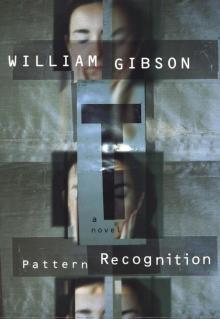 Pattern Recognition
Pattern Recognition Spook Country
Spook Country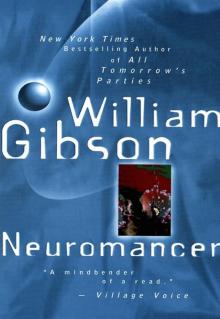 Neuromancer
Neuromancer Skinner's Room
Skinner's Room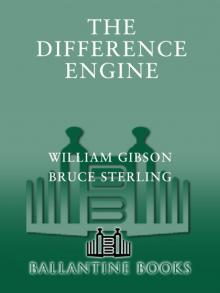 The Difference Engine
The Difference Engine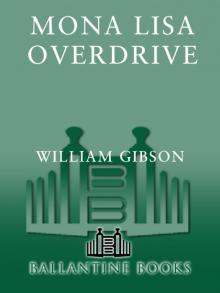 Mona Lisa Overdrive
Mona Lisa Overdrive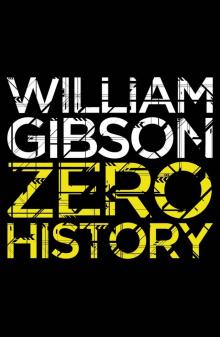 Zero History
Zero History The Peripheral
The Peripheral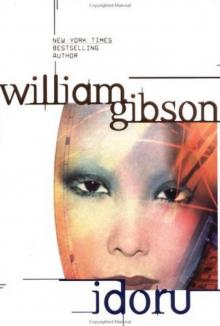 Idoru
Idoru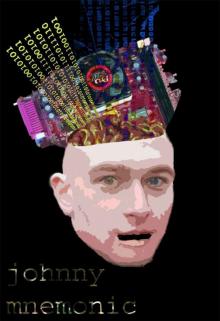 Johnny Mnemonic
Johnny Mnemonic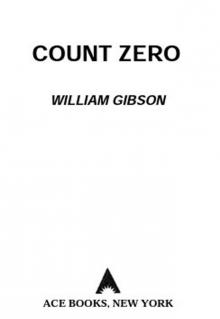 Count Zero
Count Zero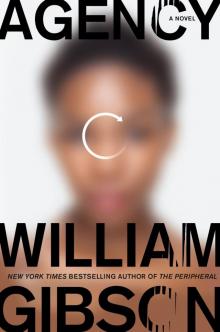 Agency
Agency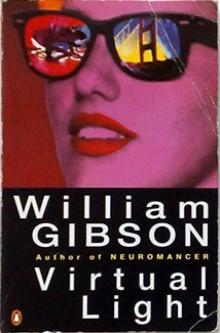 Virtual Light
Virtual Light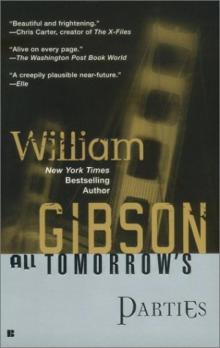 All Tomorrow's Parties
All Tomorrow's Parties The Miracle Worker
The Miracle Worker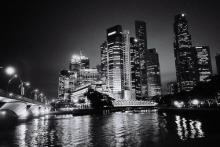 Disneyland with the Death Penalty
Disneyland with the Death Penalty Idoru tb-2
Idoru tb-2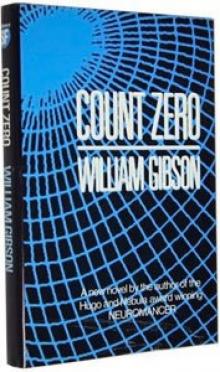 Count Zero s-2
Count Zero s-2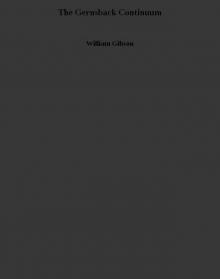 The Gernsback Continuum
The Gernsback Continuum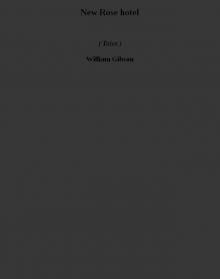 New Rose hotel (tales)
New Rose hotel (tales)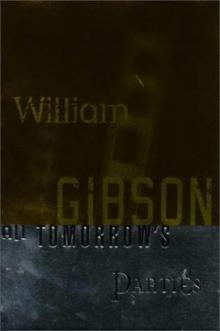 All Tomorrow's Parties bt-3
All Tomorrow's Parties bt-3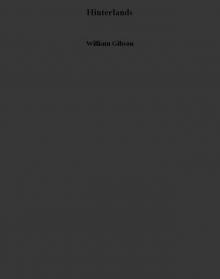 Hinterlands
Hinterlands Thirteen Views Of A Cardboard City
Thirteen Views Of A Cardboard City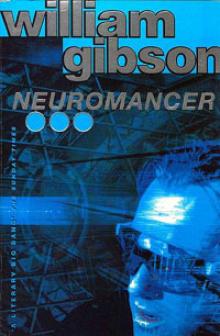 Neuromancer ts-1
Neuromancer ts-1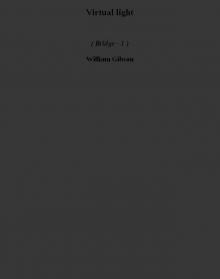 Virtual light b-1
Virtual light b-1